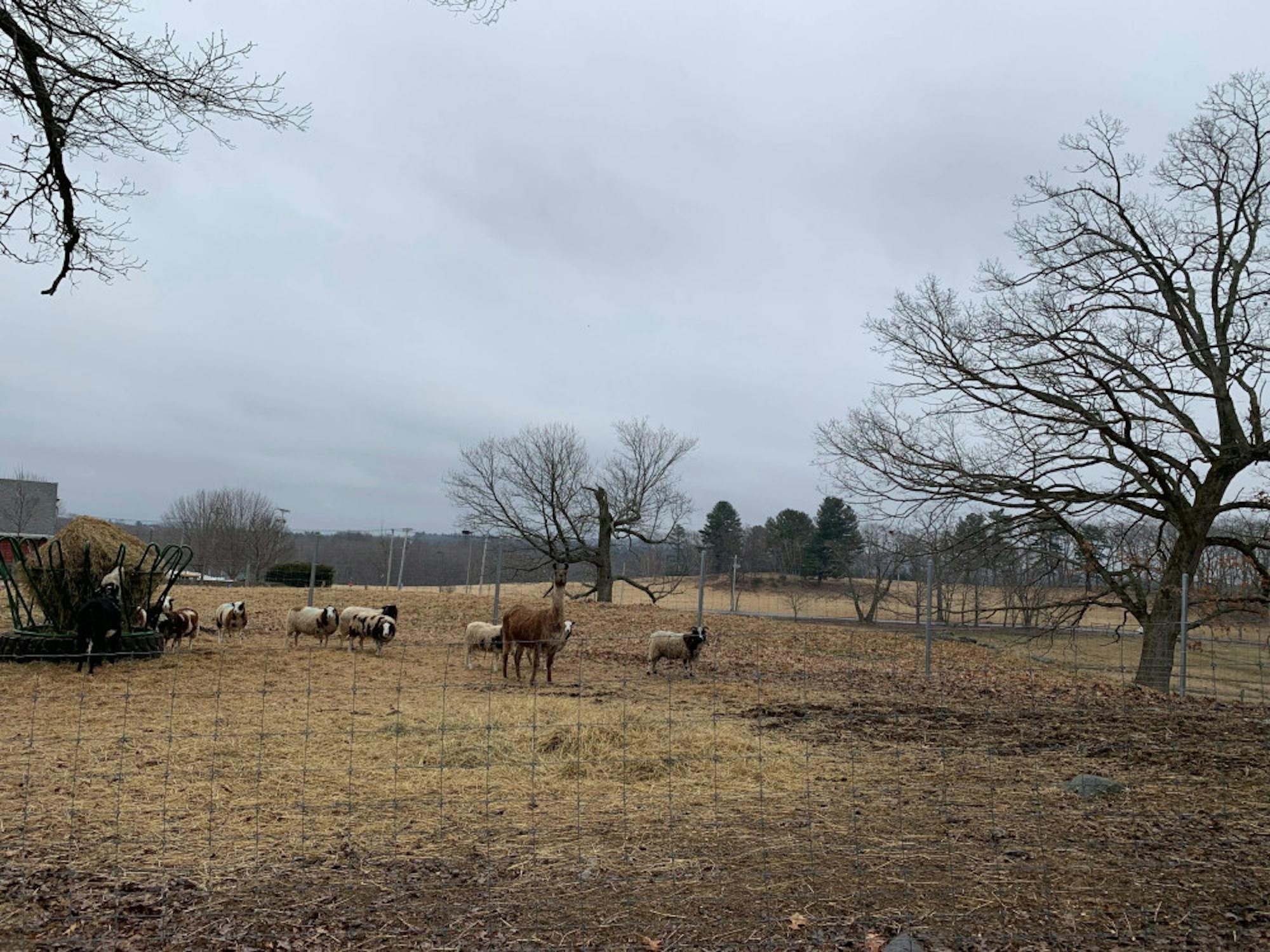Less than an hour away from the Medford/Somerville campus is the Cummings School of Veterinary Medicine in North Grafton, Mass. Sprawling fields and live animals, as well as an animal hospital and lecture halls, greet anyone who ventures out.
The Cummings School of Veterinary Medicine is home to the Cummings School Farm, a fully operational farm that is used extensively for teaching, research and providing for the local community. The farm operates, harvests and cares for hundreds of acres of land on the Grafton campus. This includes harvesting hay and corn silage to feed the animals on the farm and to sell to the surrounding community. Additionally, the farm cares for sheep, cows, pigs and chickens.
“They’re all used for the purposes of teaching our various veterinary students. … A lot of our students don't have experience with large animals. So they come here to not only learn about the husbandry, the care and the medical side of it … but also see how they’re raised and what conditions and standards should be in the industry,”Stephanie Bertrand, farm manager at the Cummings School Farm, said.
The Cummings Schooldoes not have tracks of study, so students have to learn about all animals — from a rat to an elephant and everything in between, Bertrand said.
The farm-based curriculum at the veterinary school is based on the life cycles of specific species. Staff at the farm engage students in each stage of those life cycles, as well as teach them any associated problems and how to care for them.
“We use the life cycle of the animal and try to relate it directly to what we’re teaching in the curriculum. And that applies to all of our species,”Bertrand said.
In veterinary school, there is often a lot of focus on treating and diagnosing the abnormal, but the farm is a great resource for learning about the management side of caring for healthy animals.
“For a student to understand [the] abnormal of an animal, to diagnose the problem, you first need to know normal,”Bertrand said.
Students learn how to treat and tend to livestock as well as learn the daily operations on the farm. It’s important for veterinary students to understand the workings of a farm to build rapport and gain credibility with the farmers whose animals they will care for, Eugene White, director of the Cummings School Farm, said.
“To me, the biggest thing about this farm is it’s not a petting zoo. So we try to mimic a true working farm, so the students can see what real farming is like,”White said. “We try to meet industry standards and manage them the way they would be managed anywhere.”
One of Bertrand’s favorite parts of working at the farm is getting to work hands-on with students who are passionate and engaged. Not coming from a veterinary background, Bertrand is able to learn from her students, just as they learn from her.
“One of the biggest things I always tell my students is, you know something different than what I know, so let's learn from each other,” she said. “I can tell you so many times I’ve learned … from students [about] medicine things that I don’t know. And vice versa, I’ll teach them things about husbandry or handling or management that they don’t know.”
White echoed this sentiment, saying that he enjoys working with students who wish to work with farm animals in their future career, as they ask challenging questions. He added that first-year students are also great to work with because he gets to watch them learn and become comfortable around large animals.
In addition to its use in teaching veterinary students, the Cummings School Farm is a resource to the broader community. Hay, meat and chicken eggs produced on the farm are available for the community to purchase.
The Adventures in Veterinary Medicine program is also an asset to the community, near and far. Middle schoolers, high schoolers, college students and adults come to the Grafton campus and are immersed in the veterinary profession for one to two weeks, Kristen Shambo, an admissions counselor and the AVM program coordinator, said.
“It’s not an animal camp, but there certainly is a nice mix of exploration of the program topics in veterinary medicine, different specialties and different career opportunities within the field. And then, of course, there's the fun aspects of animal handling [and] clinical skills,”Shambo said.
It can be difficult to gain exposure at an early age to the veterinary profession. Many students in the AVM program have not had extensive animal handling experience, so the farm allows students to get valuable experience with chickens, sheep, swine, dairy cows and horses.
“[The AVM program offers] great exposure to different types of animals, and it gives them actual hands-on experience to learn different handling techniques that are safe for themselves as well as the animals,”Shambo said.
Adventures in Veterinary Medicine is a career exploration program which allows students of all ages to see if veterinary school is the right choice for them.
“I want students to have fun, but we also want them to learn a lot about the veterinary profession, and I want it to help them decide whether or not this might be a possible future career for them. So it’s giving them fun opportunities to explore the field [and] to meet as many people as possible,”Shambo said. “But it also helps … our [Doctor of Veterinary Medicine] and other DVM programs by bringing some diversity into the field. It’s severely lacking.”
Overall, the students at the veterinary school and in the AVM program are able to learn from the farm staff, and the farm staff learn from the students. Bertrand and White both noted that this environment makes working at the farm enjoyable for all.
“There is this teaching research mission here at the farm, and we all work together and collaborate and disagree, and fight a little bit. And that’s when you get good results,” White said.






